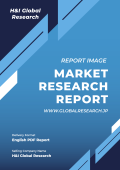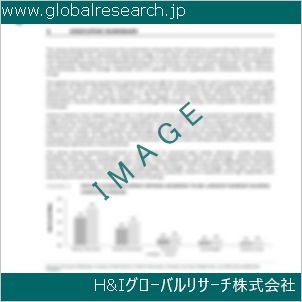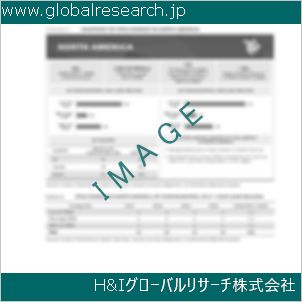1 Glass Mineral Wool Insulation Market Overview
1.1 Product Definition
1.2 Glass Mineral Wool Insulation Segment by Type
1.2.1 Global Glass Mineral Wool Insulation Market Value Growth Rate Analysis by Type 2022 VS 2029
1.2.2 Below 80 mm
1.2.3 80-150 mm
1.2.4 Above 150 mm
1.3 Glass Mineral Wool Insulation Segment by Application
1.3.1 Global Glass Mineral Wool Insulation Market Value Growth Rate Analysis by Application: 2022 VS 2029
1.3.2 Residential
1.3.3 Commercial
1.3.4 Others
1.4 Global Market Growth Prospects
1.4.1 Global Glass Mineral Wool Insulation Production Value Estimates and Forecasts (2018-2029)
1.4.2 Global Glass Mineral Wool Insulation Production Capacity Estimates and Forecasts (2018-2029)
1.4.3 Global Glass Mineral Wool Insulation Production Estimates and Forecasts (2018-2029)
1.4.4 Global Glass Mineral Wool Insulation Market Average Price Estimates and Forecasts (2018-2029)
1.5 Assumptions and Limitations
2 Market Competition by Manufacturers
2.1 Global Glass Mineral Wool Insulation Production Market Share by Manufacturers (2018-2023)
2.2 Global Glass Mineral Wool Insulation Production Value Market Share by Manufacturers (2018-2023)
2.3 Global Key Players of Glass Mineral Wool Insulation, Industry Ranking, 2021 VS 2022 VS 2023
2.4 Global Glass Mineral Wool Insulation Market Share by Company Type (Tier 1, Tier 2 and Tier 3)
2.5 Global Glass Mineral Wool Insulation Average Price by Manufacturers (2018-2023)
2.6 Global Key Manufacturers of Glass Mineral Wool Insulation, Manufacturing Base Distribution and Headquarters
2.7 Global Key Manufacturers of Glass Mineral Wool Insulation, Product Offered and Application
2.8 Global Key Manufacturers of Glass Mineral Wool Insulation, Date of Enter into This Industry
2.9 Glass Mineral Wool Insulation Market Competitive Situation and Trends
2.9.1 Glass Mineral Wool Insulation Market Concentration Rate
2.9.2 Global 5 and 10 Largest Glass Mineral Wool Insulation Players Market Share by Revenue
2.10 Mergers & Acquisitions, Expansion
3 Glass Mineral Wool Insulation Production by Region
3.1 Global Glass Mineral Wool Insulation Production Value Estimates and Forecasts by Region: 2018 VS 2022 VS 2029
3.2 Global Glass Mineral Wool Insulation Production Value by Region (2018-2029)
3.2.1 Global Glass Mineral Wool Insulation Production Value Market Share by Region (2018-2023)
3.2.2 Global Forecasted Production Value of Glass Mineral Wool Insulation by Region (2024-2029)
3.3 Global Glass Mineral Wool Insulation Production Estimates and Forecasts by Region: 2018 VS 2022 VS 2029
3.4 Global Glass Mineral Wool Insulation Production by Region (2018-2029)
3.4.1 Global Glass Mineral Wool Insulation Production Market Share by Region (2018-2023)
3.4.2 Global Forecasted Production of Glass Mineral Wool Insulation by Region (2024-2029)
3.5 Global Glass Mineral Wool Insulation Market Price Analysis by Region (2018-2023)
3.6 Global Glass Mineral Wool Insulation Production and Value, Year-over-Year Growth
3.6.1 North America Glass Mineral Wool Insulation Production Value Estimates and Forecasts (2018-2029)
3.6.2 Europe Glass Mineral Wool Insulation Production Value Estimates and Forecasts (2018-2029)
3.6.3 China Glass Mineral Wool Insulation Production Value Estimates and Forecasts (2018-2029)
3.6.4 Japan Glass Mineral Wool Insulation Production Value Estimates and Forecasts (2018-2029)
4 Glass Mineral Wool Insulation Consumption by Region
4.1 Global Glass Mineral Wool Insulation Consumption Estimates and Forecasts by Region: 2018 VS 2022 VS 2029
4.2 Global Glass Mineral Wool Insulation Consumption by Region (2018-2029)
4.2.1 Global Glass Mineral Wool Insulation Consumption by Region (2018-2023)
4.2.2 Global Glass Mineral Wool Insulation Forecasted Consumption by Region (2024-2029)
4.3 North America
4.3.1 North America Glass Mineral Wool Insulation Consumption Growth Rate by Country: 2018 VS 2022 VS 2029
4.3.2 North America Glass Mineral Wool Insulation Consumption by Country (2018-2029)
4.3.3 U.S.
4.3.4 Canada
4.4 Europe
4.4.1 Europe Glass Mineral Wool Insulation Consumption Growth Rate by Country: 2018 VS 2022 VS 2029
4.4.2 Europe Glass Mineral Wool Insulation Consumption by Country (2018-2029)
4.4.3 Germany
4.4.4 France
4.4.5 U.K.
4.4.6 Italy
4.4.7 Russia
4.5 Asia Pacific
4.5.1 Asia Pacific Glass Mineral Wool Insulation Consumption Growth Rate by Region: 2018 VS 2022 VS 2029
4.5.2 Asia Pacific Glass Mineral Wool Insulation Consumption by Region (2018-2029)
4.5.3 China
4.5.4 Japan
4.5.5 South Korea
4.5.6 China Taiwan
4.5.7 Southeast Asia
4.5.8 India
4.6 Latin America, Middle East & Africa
4.6.1 Latin America, Middle East & Africa Glass Mineral Wool Insulation Consumption Growth Rate by Country: 2018 VS 2022 VS 2029
4.6.2 Latin America, Middle East & Africa Glass Mineral Wool Insulation Consumption by Country (2018-2029)
4.6.3 Mexico
4.6.4 Brazil
4.6.5 Turkey
5 Segment by Type
5.1 Global Glass Mineral Wool Insulation Production by Type (2018-2029)
5.1.1 Global Glass Mineral Wool Insulation Production by Type (2018-2023)
5.1.2 Global Glass Mineral Wool Insulation Production by Type (2024-2029)
5.1.3 Global Glass Mineral Wool Insulation Production Market Share by Type (2018-2029)
5.2 Global Glass Mineral Wool Insulation Production Value by Type (2018-2029)
5.2.1 Global Glass Mineral Wool Insulation Production Value by Type (2018-2023)
5.2.2 Global Glass Mineral Wool Insulation Production Value by Type (2024-2029)
5.2.3 Global Glass Mineral Wool Insulation Production Value Market Share by Type (2018-2029)
5.3 Global Glass Mineral Wool Insulation Price by Type (2018-2029)
6 Segment by Application
6.1 Global Glass Mineral Wool Insulation Production by Application (2018-2029)
6.1.1 Global Glass Mineral Wool Insulation Production by Application (2018-2023)
6.1.2 Global Glass Mineral Wool Insulation Production by Application (2024-2029)
6.1.3 Global Glass Mineral Wool Insulation Production Market Share by Application (2018-2029)
6.2 Global Glass Mineral Wool Insulation Production Value by Application (2018-2029)
6.2.1 Global Glass Mineral Wool Insulation Production Value by Application (2018-2023)
6.2.2 Global Glass Mineral Wool Insulation Production Value by Application (2024-2029)
6.2.3 Global Glass Mineral Wool Insulation Production Value Market Share by Application (2018-2029)
6.3 Global Glass Mineral Wool Insulation Price by Application (2018-2029)
7 Key Companies Profiled
7.1 Knauf
7.1.1 Knauf Glass Mineral Wool Insulation Corporation Information
7.1.2 Knauf Glass Mineral Wool Insulation Product Portfolio
7.1.3 Knauf Glass Mineral Wool Insulation Production, Value, Price and Gross Margin (2018-2023)
7.1.4 Knauf Main Business and Markets Served
7.1.5 Knauf Recent Developments/Updates
7.2 Owens Corning
7.2.1 Owens Corning Glass Mineral Wool Insulation Corporation Information
7.2.2 Owens Corning Glass Mineral Wool Insulation Product Portfolio
7.2.3 Owens Corning Glass Mineral Wool Insulation Production, Value, Price and Gross Margin (2018-2023)
7.2.4 Owens Corning Main Business and Markets Served
7.2.5 Owens Corning Recent Developments/Updates
7.3 Saint-Gobain
7.3.1 Saint-Gobain Glass Mineral Wool Insulation Corporation Information
7.3.2 Saint-Gobain Glass Mineral Wool Insulation Product Portfolio
7.3.3 Saint-Gobain Glass Mineral Wool Insulation Production, Value, Price and Gross Margin (2018-2023)
7.3.4 Saint-Gobain Main Business and Markets Served
7.3.5 Saint-Gobain Recent Developments/Updates
7.4 Johns Manville
7.4.1 Johns Manville Glass Mineral Wool Insulation Corporation Information
7.4.2 Johns Manville Glass Mineral Wool Insulation Product Portfolio
7.4.3 Johns Manville Glass Mineral Wool Insulation Production, Value, Price and Gross Margin (2018-2023)
7.4.4 Johns Manville Main Business and Markets Served
7.4.5 Johns Manville Recent Developments/Updates
7.5 Huamei Energy-saving Technology
7.5.1 Huamei Energy-saving Technology Glass Mineral Wool Insulation Corporation Information
7.5.2 Huamei Energy-saving Technology Glass Mineral Wool Insulation Product Portfolio
7.5.3 Huamei Energy-saving Technology Glass Mineral Wool Insulation Production, Value, Price and Gross Margin (2018-2023)
7.5.4 Huamei Energy-saving Technology Main Business and Markets Served
7.5.5 Huamei Energy-saving Technology Recent Developments/Updates
7.6 Shenzhou Energy Saving Technology
7.6.1 Shenzhou Energy Saving Technology Glass Mineral Wool Insulation Corporation Information
7.6.2 Shenzhou Energy Saving Technology Glass Mineral Wool Insulation Product Portfolio
7.6.3 Shenzhou Energy Saving Technology Glass Mineral Wool Insulation Production, Value, Price and Gross Margin (2018-2023)
7.6.4 Shenzhou Energy Saving Technology Main Business and Markets Served
7.6.5 Shenzhou Energy Saving Technology Recent Developments/Updates
7.7 KCC Corporation
7.7.1 KCC Corporation Glass Mineral Wool Insulation Corporation Information
7.7.2 KCC Corporation Glass Mineral Wool Insulation Product Portfolio
7.7.3 KCC Corporation Glass Mineral Wool Insulation Production, Value, Price and Gross Margin (2018-2023)
7.7.4 KCC Corporation Main Business and Markets Served
7.7.5 KCC Corporation Recent Developments/Updates
8 Industry Chain and Sales Channels Analysis
8.1 Glass Mineral Wool Insulation Industry Chain Analysis
8.2 Glass Mineral Wool Insulation Key Raw Materials
8.2.1 Key Raw Materials
8.2.2 Raw Materials Key Suppliers
8.3 Glass Mineral Wool Insulation Production Mode & Process
8.4 Glass Mineral Wool Insulation Sales and Marketing
8.4.1 Glass Mineral Wool Insulation Sales Channels
8.4.2 Glass Mineral Wool Insulation Distributors
8.5 Glass Mineral Wool Insulation Customers
9 Glass Mineral Wool Insulation Market Dynamics
9.1 Glass Mineral Wool Insulation Industry Trends
9.2 Glass Mineral Wool Insulation Market Drivers
9.3 Glass Mineral Wool Insulation Market Challenges
9.4 Glass Mineral Wool Insulation Market Restraints
10 Research Finding and Conclusion
11 Methodology and Data Source
11.1 Methodology/Research Approach
11.1.1 Research Programs/Design
11.1.2 Market Size Estimation
11.1.3 Market Breakdown and Data Triangulation
11.2 Data Source
11.2.1 Secondary Sources
11.2.2 Primary Sources
11.3 Author List
11.4 Disclaimer
| ※参考情報 ガラス製ミネラルウール断熱材は、建築や工業の分野で広く使われている断熱材の一種です。この材料は、ガラス繊維を主成分とし、その性質によって優れた断熱性能を持つことが特徴です。本稿では、ガラス製ミネラルウール断熱材の定義、特徴、種類、用途、そして関連技術について詳しく述べます。 まず、ガラス製ミネラルウール断熱材の定義についてですが、これは主に天然鉱石やリサイクルガラスを原料として製造された繊維状の断熱材です。高温で溶融したガラスが加熱・冷却される過程で、細い繊維となり形成されます。この繊維が集まって形成されたミネラルウールは、非常に軽量であると同時に良好な吸音性能や防火性能を持っているため、様々な用途で利用されています。 次に、ガラス製ミネラルウール断熱材の特徴について述べます。この材料の主な利点の一つは、その優れた断熱性能です。熱伝導率が低く、外部の温度変化から建物内部の温度を保つことができます。これにより、エネルギーの消費を抑え、省エネ効果を実現します。また、化学的に安定しているため、腐食や劣化に強い特性を持っています。加えて、ガラス製ミネラルウールは防火性が高く、火災時にも安全性が確保されます。 さらに、ガラス製ミネラルウール断熱材は環境に配慮した材料でもあります。リサイクルガラスが原料として使用されるため、資源の有効活用が図られています。また、生産過程においても、持続可能な技術が利用されており、環境負荷を軽減するよう努められています。 種類としては、ガラス製ミネラルウールは様々な形式で提供されています。主に、バットタイプ、ボードタイプ、ブロックタイプの3つに分類されます。バットタイプは、屋根や壁、階段などの断熱に利用されることが多く、柔軟性があり、施工が容易です。ボードタイプは、特に床や壁の断熱に使用され、断熱性能が高いため、高い断熱効果が求められるところで利用されます。ブロックタイプは、主に工業用の断熱に使われ、特に高温環境での利用が想定されています。 ガラス製ミネラルウール断熱材の用途は多岐にわたります。住宅や商業施設の断熱材として、あるいは冷暖房設備の周囲に取り付けられ、エネルギー効率を向上させる役割を果たします。さらに、工業分野においても、ボイラーやダクトの断熱にも利用されており、温度の維持やエネルギーの損失を防ぐために欠かせない材料となっています。また、音の吸収性能があるため、防音対策にも利用されます。これにより、騒音を軽減し、快適な居住空間を提供することができます。 現在、ガラス製ミネラルウール断熱材に関連する技術も進化を遂げています。例えば、より高機能な断熱性能を持つ材料の開発や、製造プロセスの効率化が進められています。特に、ナノテクノロジーの導入により、より薄い材料であっても高い断熱性能を実現することが可能になっています。これにより、建物のデザインに柔軟性を持たせることができ、さまざまなニーズに応えることができるようになりました。 また、施工技術も向上しており、より迅速かつ正確に設置することができるようになっています。これにより、工期の短縮やコストの削減にも寄与しています。さらに、施工後の性能確認を行うための新しい測定技術も開発されており、品質管理の向上が図られています。 最後に、ガラス製ミネラルウール断熱材は、持続可能な社会の実現に向けて重要な役割を果たす材料であるといえます。エネルギー消費を抑えることができるため、環境負荷の軽減に寄与し、持続可能な建築物の実現に貢献しています。断熱だけでなく、防音、防火といった多機能を持つこの材料は、今後もその価値が高まることが期待されます。 以上のように、ガラス製ミネラルウール断熱材は多くの優れた特性を持ち、多様な用途で利用される重要な材料です。未来に向けて、さらなる技術革新が行われ、環境への配慮が一層強調される中、この材料の需要は高まり続けることでしょう。 |
❖ 免責事項 ❖
http://www.globalresearch.jp/disclaimer












